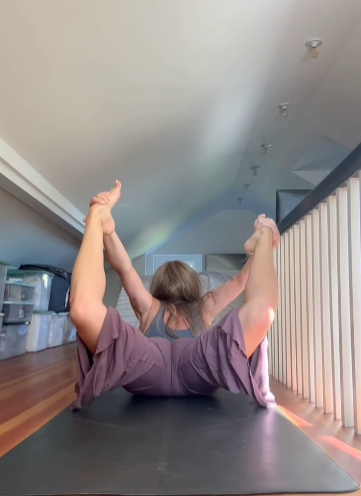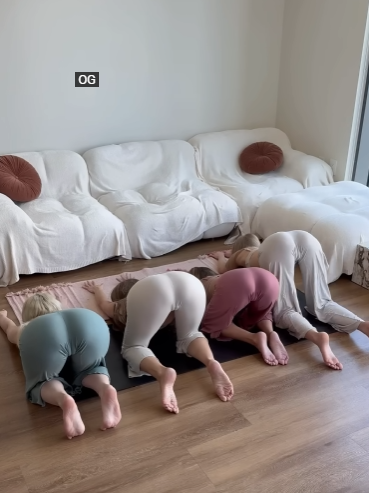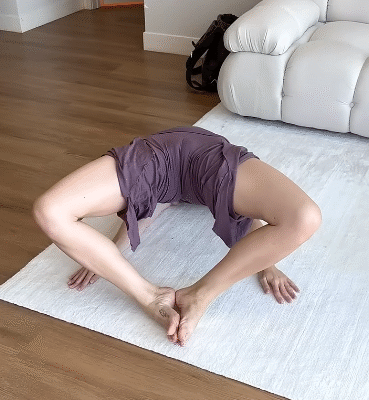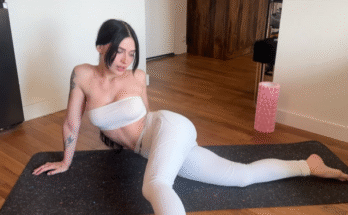
The shoulder stand abductor yoga stretch is a unique blend of strength, balance, and flexibility training that targets multiple muscle groups while also encouraging mental calmness. As the name suggests, it combines a supported shoulder stand pose with an active abduction of the legs, giving you the benefits of an inversion, core engagement, and hip-opening in one powerful movement. This pose is not only visually striking but also deeply rewarding for both beginners and experienced yoga practitioners.
In this guide, we’ll explore what the shoulder stand abductor yoga stretch is, its benefits, how to do it safely, common mistakes to avoid, and tips to make it more effective.
Understanding the Shoulder Stand Abductor Pose
The traditional shoulder stand (Sarvangasana in Sanskrit) is considered a fundamental inversion in yoga. You lie on your back, lift your legs and hips, and support your lower back with your hands, balancing on your shoulders. Adding the abductor stretch element means you open your legs into a wide “V” shape, activating your inner and outer thigh muscles.
This combination transforms the static inversion into a dynamic hip and core challenge. Instead of just holding your legs straight up, you work your abductors (outer thigh muscles), adductors (inner thigh muscles), and deep stabilizers in your hips.
Benefits of the Shoulder Stand Abductor Yoga Stretch
1. Improves Circulation and Lymphatic Flow
Being inverted encourages blood flow toward the upper body and brain, which can help improve oxygen supply, reduce swelling in the legs, and support lymphatic drainage.
2. Strengthens Core and Lower Body
Holding your legs in an open position while inverted forces your core muscles—especially the lower abdominals and obliques—to work harder to stabilize you. Your thigh muscles, glutes, and hips also get an active workout.
3. Enhances Hip Flexibility
The abduction movement stretches your adductor muscles (inner thighs), improving your range of motion in hip-opening postures.
4. Improves Balance and Body Awareness
Because the abductor variation changes your center of gravity, you must refine your sense of balance and body alignment.
5. Boosts Mental Focus and Calmness
Like most inversions, this stretch encourages a meditative state, helping relieve stress and improve mental clarity.

How to Perform the Shoulder Stand Abductor Yoga Stretch
Step 1 – Prepare Your Space
Find a quiet area with enough room for you to move your legs freely. Use a yoga mat for cushioning. Beginners can use a folded blanket under the shoulders to protect the neck.
Step 2 – Warm Up
Perform a gentle warm-up with movements like:
- Cat-Cow stretches for the spine.
- Seated forward folds to warm up the hamstrings.
- Gentle hip openers like Butterfly Pose.
Step 3 – Get into Shoulder Stand
- Lie on your back with your arms alongside your body, palms facing down.
- Engage your core and lift your legs overhead into Plow Pose (Halasana).
- Bend your elbows and place your hands on your lower back for support, fingers pointing upward.
- Slowly lift your legs up toward the ceiling so your body is in a straight line from shoulders to toes.
Step 4 – Add the Abductor Stretch
- Once you are stable in the shoulder stand, gently separate your legs into a wide “V” shape.
- Keep your toes pointed or flexed depending on comfort.
- Engage your thighs so your legs don’t just flop open—this keeps your muscles active and joints safe.
Step 5 – Maintain and Breathe
- Hold the stretch for 15–30 seconds at first, working up to 1–2 minutes as you get stronger.
- Keep your gaze straight up and avoid turning your head to protect your neck.
Step 6 – Exit Safely
- Slowly bring your legs back together.
- Lower your legs overhead into Plow Pose.
- Gently roll down, one vertebra at a time, until your back rests on the mat.

Tips for Success
- Use Props: Place a folded blanket under your shoulders to reduce pressure on your neck.
- Engage the Core: This prevents your lower back from collapsing and helps maintain balance.
- Move Slowly: Quick movements in an inversion can throw off balance and cause strain.
- Breathe Deeply: Inversions can feel intense—slow breathing calms the nervous system.
- Work Gradually: Don’t push for a wide split on your first try; let flexibility develop over time.
Common Mistakes to Avoid
- Collapsing the Neck
- Avoid placing too much weight on the head or neck. Most of your weight should be on your shoulders and upper arms.
- Overstretching the Legs
- Opening too far without muscle engagement can strain the groin and hips.
- Arching the Lower Back
- Keep your tailbone slightly tucked to prevent lumbar strain.
- Holding the Breath
- Breath-holding increases tension and can cause dizziness.

Variations and Modifications
For Beginners:
- Try the pose with your legs supported against a wall.
- Keep a smaller “V” shape to reduce hip strain.
For More Challenge:
- Alternate opening and closing the legs slowly to create dynamic movement.
- Add small pulses to engage the abductors even more.
Restorative Option:
- Use a yoga strap around your thighs to hold the position with less muscular effort, focusing more on the stretch and breathing.
Safety Considerations
The shoulder stand abductor yoga stretch is not recommended for:
- People with neck injuries or severe spinal issues.
- Individuals with uncontrolled high blood pressure or glaucoma.
- Pregnant practitioners in later stages.
Always listen to your body, and if you feel sharp pain or dizziness, come out of the pose immediately. Consulting a yoga instructor or physical therapist is a good idea, especially if you are new to inversions.
Combining the Stretch with Other Poses
For a balanced yoga session, you can combine the shoulder stand abductor yoga stretch with:
- Bridge Pose – Prepares the shoulders and spine for inversion.
- Happy Baby Pose – Opens the hips and stretches the inner thighs.
- Seated Forward Fold – Releases the back and hamstrings after inversion.
- Reclined Bound Angle Pose – Gentle hip opener to finish.

Final Thoughts
The shoulder stand abductor yoga stretch offers a dynamic mix of benefits—improving circulation, strengthening the core and hips, boosting flexibility, and promoting mental calm. Like all inversions, it requires patience, mindfulness, and proper technique to avoid strain. By approaching this pose gradually, focusing on alignment, and engaging the muscles actively, you can enjoy a rewarding practice that enhances both physical and mental well-being.
This isn’t just a pose—it’s a journey of body awareness, control, and balance. Whether you’re looking to improve your hip flexibility, challenge your core stability, or simply explore new variations in your yoga practice, this stretch can become a powerful addition to your routine.



